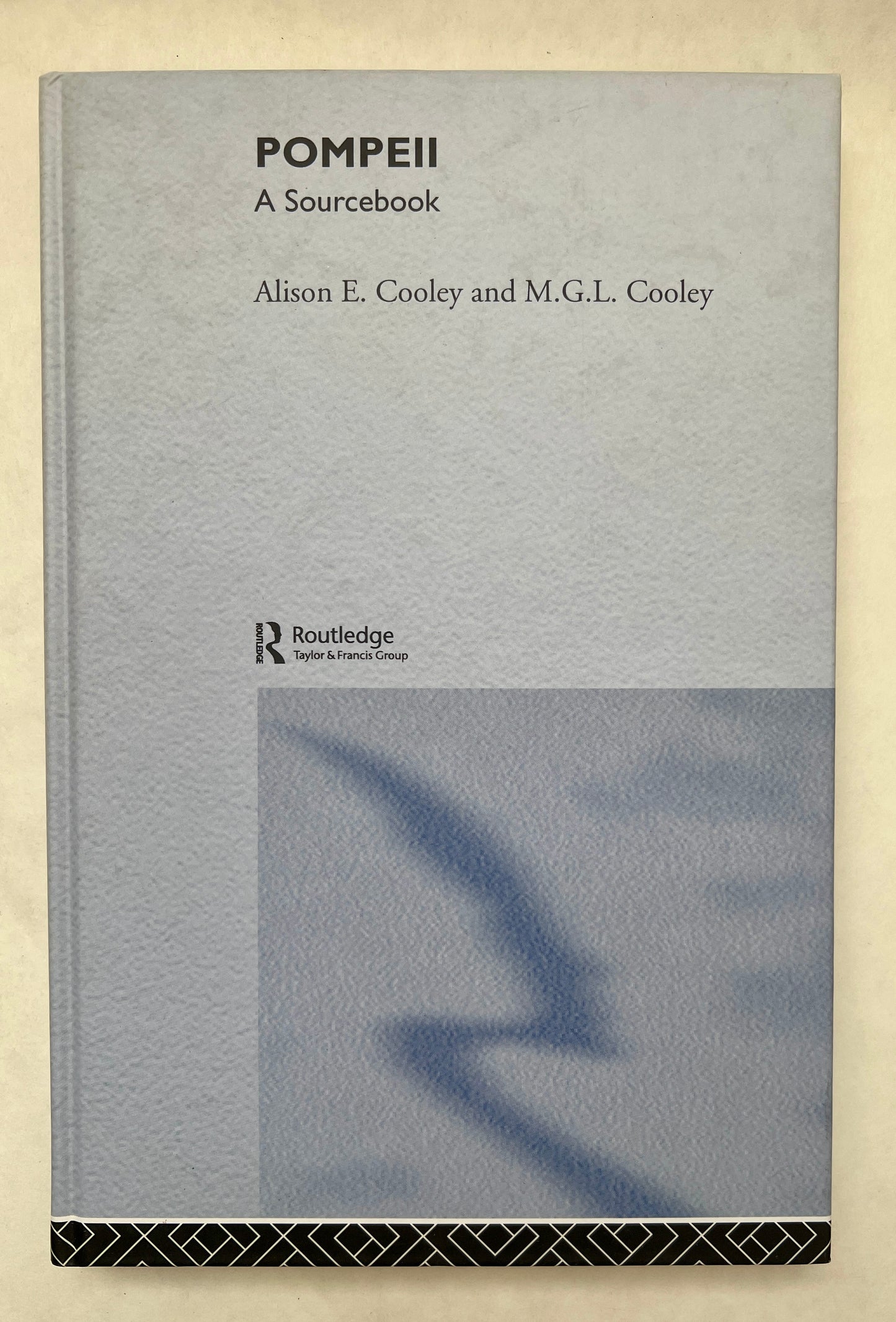Cooley, Alison; Cooley, M. G. L.
Pompeii; A Sourcebook
Pompeii; A Sourcebook
No se pudo cargar la disponibilidad de retiro
London: Routledge, 2004. xiii, 254 pages: illustrations, maps; 24 cm Very fine; as new. Hardcover. ISBN: 9780415262118, 9780415262125
"On 24 August A.D. 79, a massive eruption of Mount Vesuvius destroyed the unremarkable Roman town of Pompeii and its population of 12,000. Today, up to five hundred times that number visit Pompeii each year, attracted by the unique insight it gives into everyday life in Roman times, as well as by the awesome power of the still-active volcano." "What is less obvious to the visitor is the quality and range of written records which survive. This book presents translations of a wide selection of these sources, giving a vivid impression of what life was like in the town. The individual chapters explore the early history of Pompeii, its destruction, leisure pursuits, politics, commerce and religion, plus early reports of its excavation. While information about the city from authors based in Rome is included, the great majority of sources come from the city itself, written by its ordinary inhabitants - men and women, citizens and slaves. They range from the labels on wine jars to scribbled insults, from advertisements for gladiatorial contests to love poetry." "With helpful introductions, notes and illustrations, this sourcebook will appeal to anyone with an interest in Pompeii and in daily life in Roman times. It is also designed to be directly relevant to those studying the Romans in translation, at school or university level."--JacketContents: Pre-Roman Pompeii. Pompeii's origins and early history (A1-7). Oscan inscriptions (A8-14). Hellenistic culture at Pompeii (A15-21). The Popidii family (A22-26). 2. Roman colonization of Pompeii. Pompeii's participation in the Social War (B1-6). Colonists at Pompeii (B7-12). Dissent at Pompeii (B13-16). Cicero's Pompeian property (B17-22). 3. Destruction of Pompeii. Earthquake of A.D. 62 (C1-5). Eruption of Vesuvius, A.D. 79 (C6-15). The aftermath of the eruption (C16-30). 4. Leisure. The Amphitheatre (D1-7). Games in the Forum and Amphitheatre (D8). Organization of games at Pompeii: announcements of shows (D9-24). Shows beyond Pompeii (D25-30). Commemoration of games (D31-33). Riot in the Amphitheatre, A.D. 59 (D34-43). Gladiatorial barracks and training school (D44-50). Theatrical entertainment (D51-70). Literary pastimes (D71-104). The baths (D105-109). 5. Religion. Temple of Apollo (E1-2). Temple of Isis (E3-8). Jupiter (E9-13). Neptune (F14). Pompeian Venus (E15-20). Popular views of the gods (E21-27). Cult of Mercury and Maia, and Augustus (E28-31). Temple of Augustan Fortune (E32-37). Emperor-worship (E38). Public priestesses (E39-50). Cults in the home (E51-57). Visions and vows (E58-60). Crossroad shrines to the Lares (E61-67). Jews (E68-71). 6. Politics and public life. Politics at Rome and Pompeii compared (F1). Election notices (F2-85). Magisterial duties (86). Careers (F87-95). Country district officials (F96-99). The impact of Rome (F100-114). 7. Tombs. Fondo Azzolini necropolis (G1-3). Public tombs: honouring the elite (G4-12). Cult of the dead (G13-14). Eumachia's tomb: changes over time (G15-19). Tomb of the Lucretii Valentes: fight for survival of a family name (G20-26). Freedmen and freedwomen (G27-35). Augustales (G36-49). Slaves (G50-51). Children (G52-55). Burials of the poor? (G56-58). Latest discovery of a necropolis (G59). Non-Pompeians (G60-69). 8. Commercial life. A regional perspective (H1-4). Wine production and selling (H5-11). Consumption: food and drink (H12-17). Fish sauce (garum and hallex) (H18-30). Other products (H31-35). Money-making (H36-50). Trades and occupations (H51-63). The organization of trade (H64-68). The wax tablets of the banker Caecilius Iucundus (H69-82). Town amenities (H83). 9. Excavation reports. The start of official excavations at Pompeii (J1-5). Temple of Isis (J6-10). The discovery of the gladiatorial barracks (J11-20). Unusual finds in the Theatre (J21-23). A royal visit (J24). A royal telegram (J25). The varied fortunes of inscriptions (J26-29). Visits to the site (J30-31). Excavation of the forum (J32-46). Excavation of the Amphitheatre (J47-52). Eruption of Vesuvius in 1822 (J53-54). House of the Faun (VI.xii. 2) (J55-58). House of the Vettii (VI.xv. 1) (J59-70). App. 1. Known dates of games at Pompeii and outside: data for barchart (D10). App. 2. Table showing quotations of literature found written on the walls of Pompeii. App. 3. A guide to monetary values. App. 4. Brief list of dates of relevance to Pompeii. Language Notes: Includes translations of Latin inscriptions from Pompeii.
Compartir


